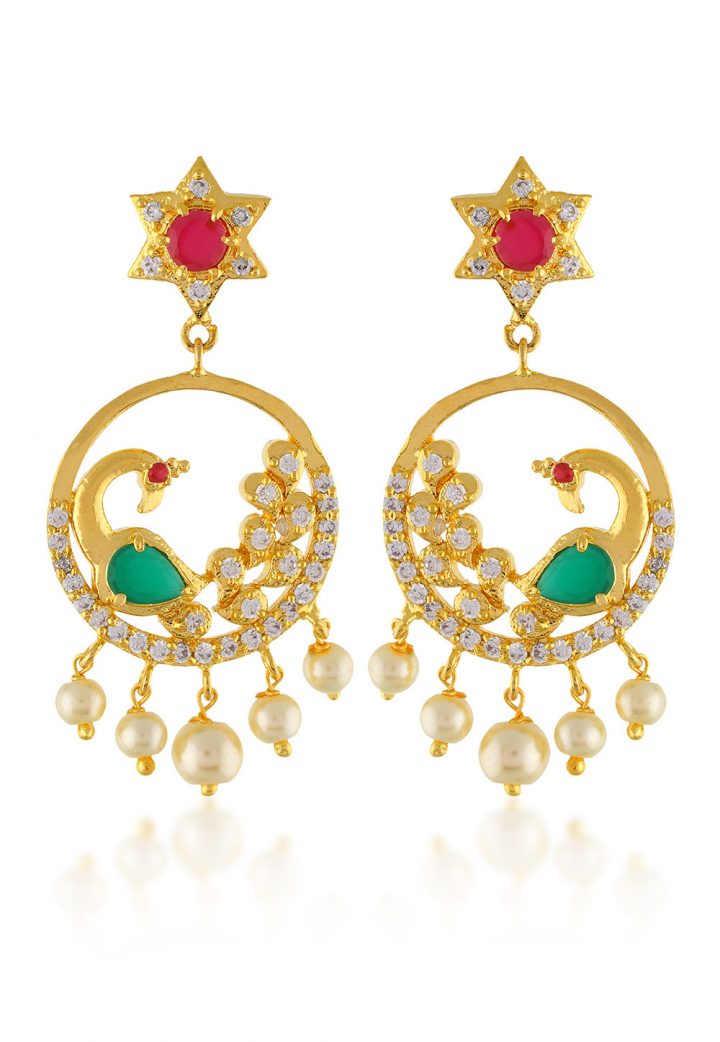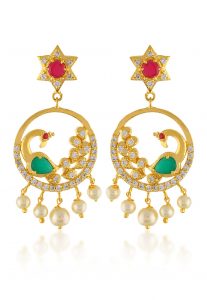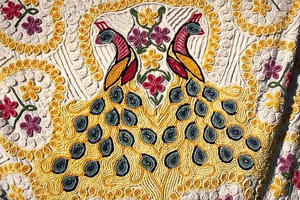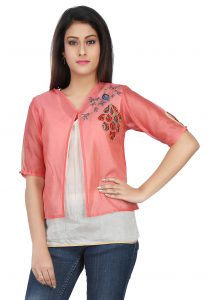
Peacock Motif
A beautiful and an inherently long-established symbol of the Indian culture since historic times, the Peacock motif has graced several forms of art and architecture, and has been a matter of pride and prestige for centuries. Even today, the Peacock motif is a popular symbol which is widely used for several different creative expressions, whether its clothes, shoes, bags, home furnishings, architecture or even jewelry.
Origin and History

Since time immemorial, the Peacock has been a symbol of wealth, beauty, pride and more importantly royalty. The earliest images have been found in Christian tomb art, and they were also a popular motif in ancient Rome and Byzantium. In India during the 15th century, Indian kings favored the Peacock motif and adorning this symbol on clothes, jewelry and paintings was considered a matter of great pride and prestige. Moreover, the kings would get their attendants to fan them with peacock feathers which also was an indication of luxury and nobility. The peacock apart from being India’s national bird is also a symbol of Indian ethnicity, tradition and exquisiteness.
Sources of inspiration
The Peacock motif is a symbol of immortality since according to ancient mythology it was believed that the Peacock’s flesh did not decay after fatality. The Peacock motif has played an important role in defining cultures across several countries like India, Far East Asia, Ancient Persia, Greece and Rome. In India, the Peacock’s image is often associated with rain and Indra’, who is the god of thunder. In the southern part of India, the peacock is considered a Vahana’, or a vehicle for lord muruga, and there are several religious Islamic buildings that are decorated with the Peacock motifs as well.
Varieties
The beauty of a Peacock motif and fashion has had a timeless relationship for centuries. Since the last few years, Peacock motifs have been in vogue and have been used as designs to decorate several objects like jewelry, hair accessories, dresses, saris, shoes, house furnishings, pillow covers and curtains. The list seems to be endless, but this motif has ruled the world of fashion and continues to experiment in several aesthetic ways.
Innovations
The Peacock motif has been used in a wide variety of fashionable objects. Apart from clothes, this motif has been a popular design used in jewellery and other decorative objects like hair pins and scarves.
Wearing Peacock Prints
A sari or a lehenga embellished with a peacock motif or feathers can make you stand out in a crowd since it gives a royal and a prestigious appeal. Weddings or any occasion that requires you to be dressed up to the nines would go best with the gorgeousness of the peacock motif.
The feathers of a Peacock are most commonly used as an accessory and have been for centuries considered a sign of nobility and prestige. In today’s modernized world of fashionable tastes, the Peacock motif is viewed as an elegant vintage ornament.
Maintenance
One needs to take care of the Peacock designs and motifs according to the fabric it’s used on. For a Tissue or Silk saree, a dry clean is perhaps the best solution, while a simple embroidered motif on cotton would be suitable for a normal hand or machine wash.
Global Appeal
The Peacock motif is a well-recognized image all over the world, and has played an important role in fashion in European countries as well. Since the late 19th and 20th centuries, America and Europe have showed immense interest towards Indian arts and crafts. The Peacock motif has been used to give a cultural and vintage appeal to Chinaware, Table cloths, Curtains and engravings.
Chronicles of the Future foretold
Fashion in the last few years has given importance to old world charm, especially in India where designers are getting in touch with the old roots and heritage that goes into popularizing Indian culture and arts in India, and across the globe. The Peacock motif has the old world charm which continues to make any sari, dress or bag a style statement while exhibiting ethnicity and tradition.
Interesting Facts and Comparisons
- In ancient times, a necklace of Amethyst, Peacock feathers, and Swallow feathers were used as protection against witches and sorcerers.
- Peacock is considered to be a symbol of immortality
- Peacock symbols were also considered as signs of resurrection, especially in Christianity
- Apart from India, the Peacock motif was a favorite amongst the rulers in ancient Rome and Byzantium
Categories: Motifs & Embroideries


